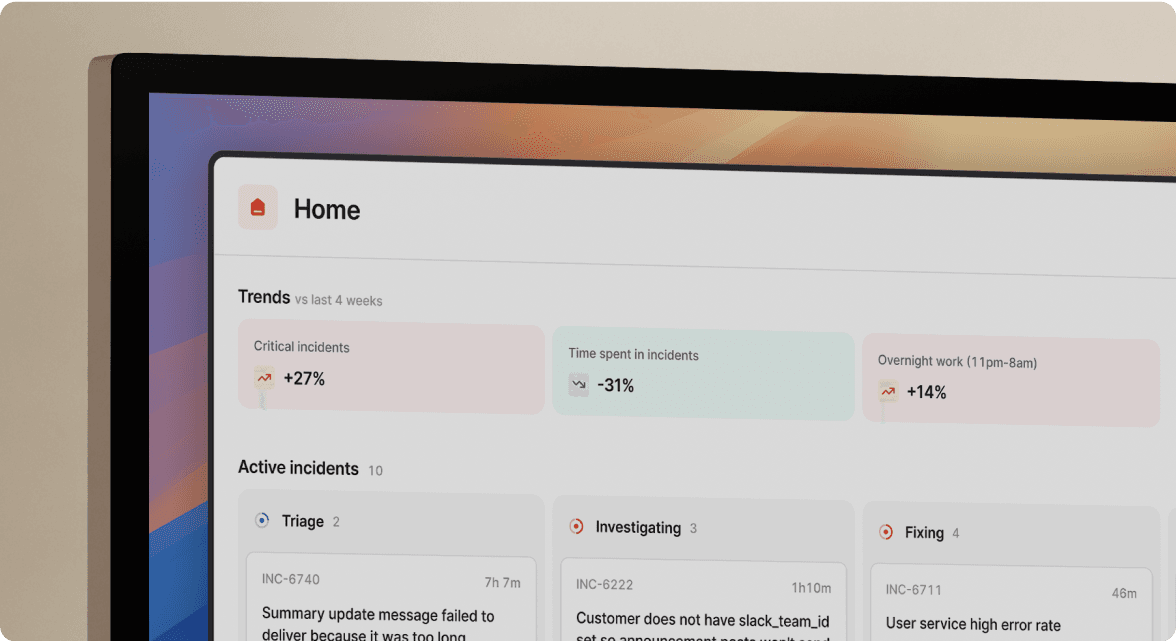What are the capabilities of Incident.io's service catalog and how does it integrate with external tools?

incident.io's service catalog gives engineering and operations teams a single source of truth for everything that matters during an incident. It documents services, owners, dependencies, and customer impact while pulling fresh data from your trusted tools.
Capabilities of incident.io's service catalog
Comprehensive mapping and clear ownership
incident.io lets you model services, features, teams, customers, or any other entity that helps people understand the system. Each entry records owners, contact channels, and valuable links so responders always know who to involve and where to look.
Dynamic and intelligent automation
Catalog data powers rules that route alerts, assign roles, and post updates. When a service changes hands or a team name changes, incident.io updates those rules automatically so pages and notifications stay accurate without manual work.
Enhanced collaboration and context
During an incident, every message, timeline event, metric snapshot, and follow-up task links back to the relevant catalog entry. This context speeds up troubleshooting and later makes incident reviews more insightful.
Integrations that enrich the catalog
Service catalog sources
- Backstage Sync components, groups, and users from Backstage into incident.io with the open-source Catalog Importer or the Backstage plugin. Your existing YAML files become live catalog entries, so incident forms and workflows always reflect the latest owners.
- Cortex Import services, domains, teams, and custom entity types from Cortex with one click. incident.io also copies attributes such as Slack channels or repository links so workflows can move from affected service to owning team to on-call schedule without copy and paste.
Communication and collaboration
- Slack Manage incidents in chat. Map Slack channels to catalog teams so the correct people are invited automatically.
- Zoom Create a meeting that is linked to the incident and its catalog entries so everyone can join the same call without hunting for links.
Monitoring and alerting
- Datadog Attach monitors to catalog entries so alerts create incidents that already know which service and team are involved.
- Prometheus Feed alert manager events into incident.io and tag them with the correct service from the catalog.
- PagerDuty Link escalation policies to catalog services so the right on-call responder is paged as soon as an incident is declared.
Project management
- Jira Export follow up actions from an incident into Jira.
- GitHub Create or link issues and pull requests to catalog entries for full traceability.
- Asana Push tasks to Asana and keep them in sync with incident follow-ups.
CRM and customer context
- Salesforce Sync account data into the catalog then tag incidents with affected customers to prioritise communication and measure reliability for each account.
Conclusion
incident.io's catalog combines clear ownership data with live information from the tools your teams already use. The result is quicker routing, richer context, and more effective post-incident learning without the burden of manual data maintenance.

See related articles
So good, you’ll break things on purpose
Ready for modern incident management? Book a call with one of our experts today.

We’d love to talk to you about
- All-in-one incident management
- Our unmatched speed of deployment
- Why we’re loved by users and easily adopted
- How we work for the whole organization



